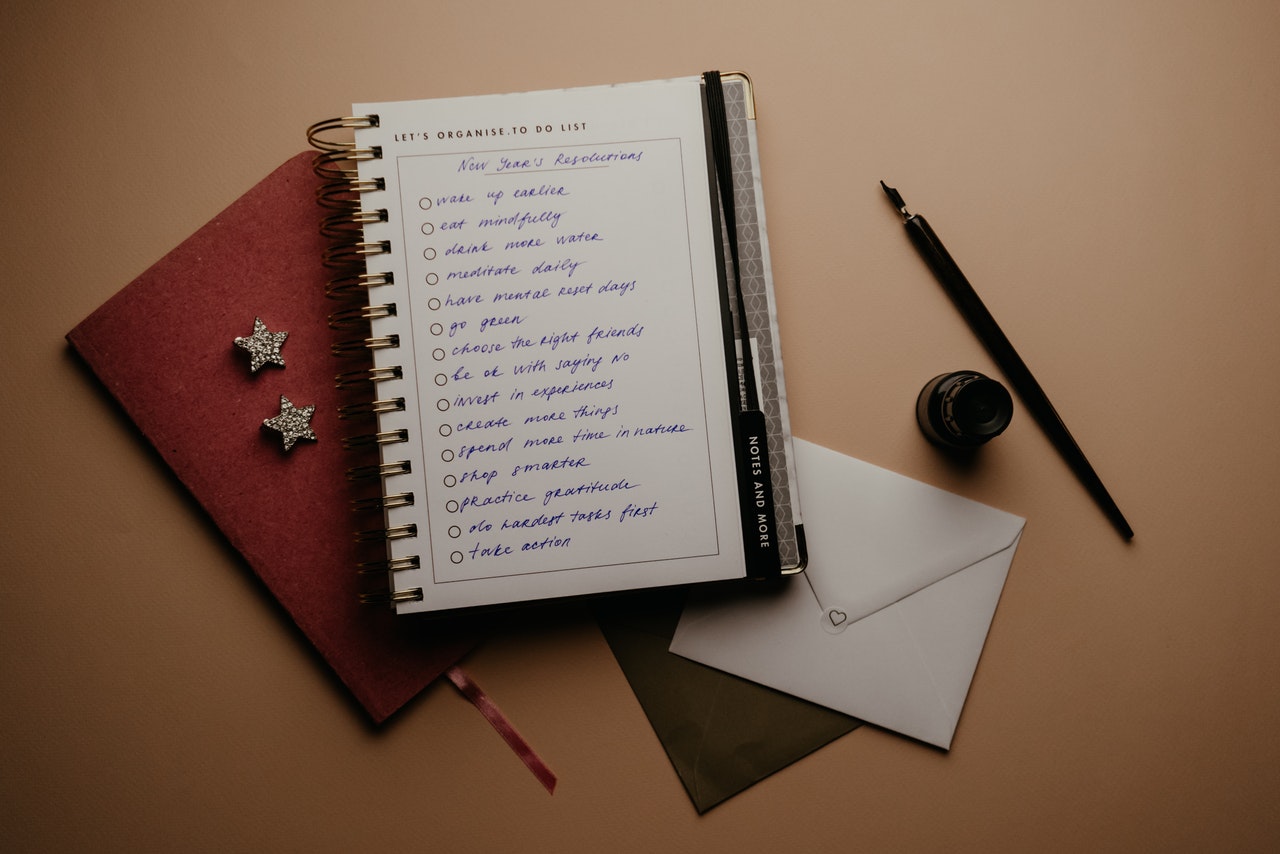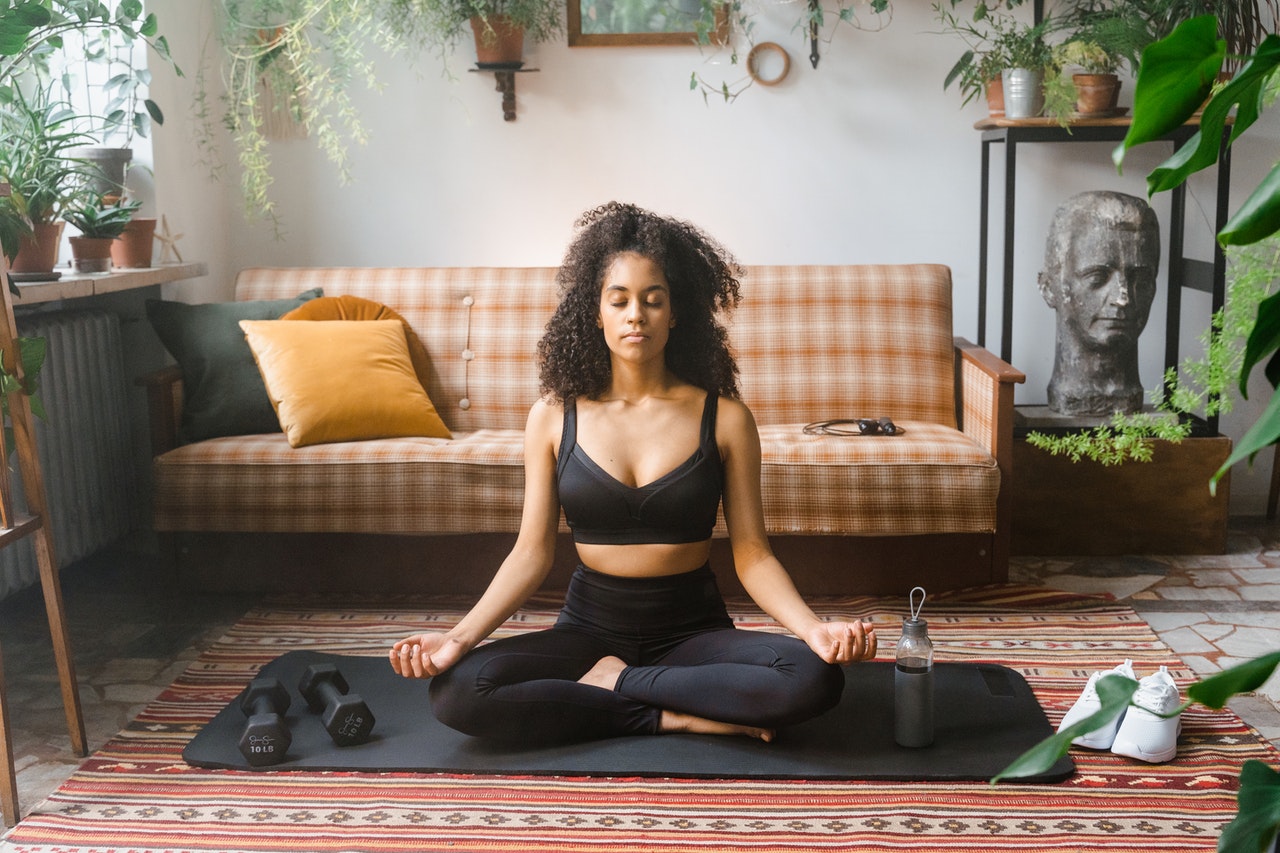A new year is coming, and with that, we always want to start fresh and create new good habits. A healthy diet and regular exercise are unquestionably beneficial to your health, but what about your everyday habits at home? You can do various things to encourage and enjoy a healthy lifestyle, from your daily routine to getting enough sleep. It’s been stated that good habits start at home, and this is certainly true in terms of your job, relationships, and physical health.
We gathered some of the best on the topic, and they gave us their expert opinion on how to start and maintain good habits that lead to a healthy lifestyle. From productivity to mindfulness, we covered most of the questions to help you achieve better habits every day.
What’s your best advice for a healthy lifestyle?
Developing healthy habits is essential for maintaining good health and leading a fulfilling life. Simple lifestyle changes and habits can significantly improve our physical and mental well-being. Here are some healthy habits and tips for a healthy lifestyle:
- Regular Exercise: Regular physical activity is essential for maintaining a healthy body and mind. Exercise can help reduce the risk of chronic diseases such as heart disease, obesity, and diabetes.
- Eating a Balanced Diet: Eating a balanced diet consisting of whole foods such as fruits, vegetables, lean protein, and whole grains can provide essential nutrients to the body and improve overall health. Also smoking and alcohol consumption has a significant negative impact on health.
- Drinking Plenty of Water: Drinking plenty of water can help maintain a healthy weight, improve digestion, and flush out toxins from the body.
- Getting Enough Sleep: Getting enough sleep is essential for the body to rest and rejuvenate. Adults need at least 7-8 hours of sleep per night to function at their best.
- Managing Stress: Chronic stress can have a negative impact on physical and mental health. Practicing stress-management techniques such as meditation, yoga, or deep breathing exercises can help reduce stress levels.
Incorporating these habits into your daily routine can help you lead a healthy lifestyle and improve your overall well-being.
QASLI
Best advice for healthy snacking
Eating well during meals: Avoiding snacking starts with eating well during meals. Each meal, normal eat-in quantities. The goal is to stall until the next meal and not be hungry 1 hour after leaving the table. The ideal way to last all day without snacking is to eat at fixed times to offer a regular rhythm to the body. Take the time to feed yourself by paying attention to what you eat. Eating gently and listening to feelings of hunger allows you to connect with your taste buds and recognize when you are full.
Analyze your cravings: Speaking of food drives, are you able to recognize them? Distinguishing a real hunger from a simple need to eat may seem difficult. Stress, fatigue, depression, and boredom are often the origin of snacking, which acts as emotional comfort. Before throwing yourself on cheese or chocolate bars, analyze your feelings and tackle the source of your discomfort. Meditate and breathe, inflating the belly well. The cravings related to your emotions will magically disappear!
Indulge in healthy snacks : There is no question of frustrating you in case of real hunger between meals. Give yourself a healthy snack that won’t cause insulin to spike at the moment and starve you a few hours later. A handful of almonds, seeds, fresh fruit, and a few vegetable sticks to dip in hummus.
Limit all products that are too sweet/too salty: If you want to snack less, the best thing is to ban all sweet products from your cupboards! Sugar calls sugar, and the more your blood sugar rises when ingested, the more likely you are to be sensitive to a drop in energy, inevitably causing cravings for snacking! The same goes for salty products, which promote high blood pressure.
Keeping the mind busy: When you have a busy mind, you don’t think about snacking! Play sports, call friends, read, meditate… In short, take care of yourself and turn the page on your old bad snacking habits.
-Cindy Juncaj at bon COOK
Why is mental health so important?
The simplest answer I can provide is that there isn’t a single area of our lives that isn’t impacted in some way by mental health. Mentally healthy people tend to be better with finances, less likely to develop addictions, be more physically fit, enjoy more satisfying personal relationships, and are usually more productive at work or school.
Most of us will experience some level of mental illness in our lives, so it’s important to take proactive steps to keep ourselves mentally healthy. Therapy, exercise, positive peer relationships, a fulfilling vocation, and avoiding excessive alcohol or drug use are tools we can all use to maintain optimal mental health.
– Randy Withers, LCMHC. Licensed therapist and Founder of Blunt Therapy
What is Enlightenment and how can I apply it to my every day?
Enlightenment is the recognition that the source of life for you is the source of life for everyone and everything. Essentially, at a quantum level, we are all one thing expressing itself with infinite variety. This is a very empowering context. When you practice this context, you become unoffendable. People and situations that used to bother you become neutral instead of charged.
When fear subsides, your creativity is sparked, which inspires you to activate your courage. Your urgency subsides when you know that we are all one thing expressing itself. You relax and start smiling more. Enlightenment is very very practical.
– Matthew Ferry at MatthewFerry.com
What is self-soothing and how can I improve it?
Self-soothing is about acceptance and peaceful coexistence, not hiding or stuffing conflict and pain. Keep in mind, it’s only as effective as the techniques we choose. These may work for you: interacting with nature, listening to music or an audiobook, enjoying a candle, meditating, and visualizing with positive self-talk.
Of course, we don’t want to get in the habit of choosing negative self-soothing behaviors. To name a few: substances, impulsive spending, gambling.
If we’re looking to improve our self-soothing skills, techniques and practice are a great place to start. We need to make sure the techniques we’ve chosen continue to work well for us. If not, it’s time to consider alternatives. And then it’s about practice. For many, self-soothing doesn’t come easy. As with any skill, practice brings expertise.
Self-soothing: once you become efficient with your technique, you’ll have a grounding and calming friend you can turn to anytime. Go ahead, start right now.
– Bill White, MS at Chipur
What’s your best advice for women to regularly exercise while working long hours?
Exercising regularly can be a challenge for anyone, especially for those who work long hours. Here are some tips for women to fit exercise into their busy schedules:
- Make it a priority: Scheduling exercise as an important appointment can help you prioritize it and make it more likely to happen.
- Find activities you enjoy: Exercise doesn’t have to be a chore. Choose activities that you enjoy, whether it’s dancing, hiking, or playing a sport.
- Make use of your breaks: If you have a lunch break or other breaks during the day, consider using this time to fit in a quick workout.
- Exercise with a friend: Having a workout buddy can help motivate you to stay on track and make exercise more enjoyable.
- Use your surroundings: Look for opportunities to incorporate physical activity into your daily routine, such as taking the stairs instead of the elevator or going for a walk during your breaks.
- Keep it short and sweet: If you don’t have a lot of time, try shorter, high-intensity workouts that can be done in 30 minutes or less.
- Don’t be too hard on yourself: It’s okay to have days where you can’t fit in a workout. Just make sure to get back on track as soon as you can.
Remember, the most important thing is to find a routine that works for you and stick with it. Even a little bit of exercise can have a big impact on your health and well-being.
– Joy Rios Founder at HIT Like a Girl Pod
What yoga poses help relieve carpal tunnel syndrome symptoms?
Relieving carpal tunnel syndrome symptoms can be a daunting task. But there are non-surgical remedies clinically proven to be quite effective. One of these is yoga. In fact, few non-surgical treatments have the same rate of effectiveness as yoga. The reason is simple. Carpal tunnel syndrome is caused by inflamed and restricted flexor tendons. Certain yoga poses reduce inflammation and break up restrictions. They also stretch and lubricate damaged tendons and promote much-needed circulation to the wrist joint.
The four yoga poses most beneficial to help relieve carpal tunnel syndrome are the Cat and Cow, Upward Facing Dog, Bharadvaja’s Twist, and the Prayer Position. Note that prolonged wrist extension is common to all these poses. But there’s one stipulation: using yoga poses as a remedy for carpal tunnel syndrome must be a part of your lifestyle. That means dedication to a daily yoga regimen. The more often you practice the four poses each day, the quicker and more complete your symptoms remission.
– Dr. Zannakis from TheCarpalRx
How can I keep positive and motivated in hard times?
My first thought is that first, you need to realize that it’s OK not to be positive and motivated all the time. Sometimes hard times mean that your brain and body need to take a break. Our culture tells us that we need to keep going all the time to get to the next step — but I know so many people who have taken that next step that has become so burned out they quit everything.
So the first step would be acknowledging when your body and mind need a break. And giving yourself some space to do that (trust me, it’s not a break when you are scrolling on social media for a half hour worried that you need to be getting your to-do list done).
The best breaks involve putting your phone down and doing something you love. Taking a walk around the block and looking at the trees in your neighborhood, tackling a project you’ve been meaning to do in your garage or kitchen. Calling a friend that can help keep you positive.
When it comes to staying motivated, one of my biggest tips is to write down where you see yourself in a year. Grab a pen and a physical piece of paper, and write down what a positive day in life would be for you if you were doing what you (realistically) wanted to be doing in a year. Visualizing what your life would look like is really helpful to start building tasks to get you from where you are at the moment to where you want to be.
– Shana Bull, Children’s Book Author at ShanaBull.com
How can we make healthy habits stick?
To achieve our dreams and vision, we require proper dedication, discipline, and most importantly, our desire to change. Making healthy habits is an easy task but sticking to those habits is a hard job. We may be able to stick to the new habits for a few days or even a few weeks, but soon we often find ourselves reverting to our old ways.
The basic things needed while trying to adapt to a healthy habit is regular exercise, maintaining a balanced weight, and avoiding smoking and drinking, which are the causes of numerous diseases and conditions. Lifestyle changes are not a quick fix.
They need to be set over a long period. Do everything step by step and try to incorporate healthy habits into your daily life. You’d be surprised by how small seeds of change lead to mighty results.
– Simmi at RitiRiwaz

What is the best temperature for sleep?
Whether you prefer your bedroom warm or cold, science says that there is a best temperature for sleep. You should set your thermostat between 60-67°F, but 65°F is considered ideal for optimal sleep.
65°F is the perfect temperature to help you fall asleep and stay asleep. When you sleep, your core body temperature drops. A cool room helps facilitate the temperature drop. Your body’s temperature drop is important because it helps with the production of melatonin, the sleep hormone.
When the room is too warm, the body’s core temperature increases. You’ll be more likely to wake up when you’re in deeper sleep cycles. You won’t get restful sleep, and you may feel tired the next day. Beyond setting your thermostat, there are a few other ways to keep cool during the night. Loose, breathable pajamas are helpful. You can also look for bedding that’s cooling, including a mattress pad that will help you maintain your lower core body temperature.
By keeping your environment cool and practicing other healthy sleep habits, you’ll be able to get a great night’s sleep.
– Michael Bennet at Hibermate
How can I start planning my daily schedule?
To start planning your daily schedule, start by brain dumping all your tasks, deadlines, meetings, and appointments then prioritize these tasks by importance.
To beat daily overwhelm, pick your top 3 main tasks for the day and schedule them using a digital, paper, or hybrid method (mine are Clickup & Google Calendar). You can continue on to other tasks once these 3 main tasks are completed.
Lastly, try to schedule your tasks based on your energy levels throughout the day for better progress, and always remember to schedule in daily self-care – which is the key to better productivity.
-Michelle Gagliani at The Balanced CEO
How can I start to be more productive throughout the day?
The number one thing you can do to increase your productivity is to begin your day with a plan. If you want to spend more time on the projects, activities, and relationships that are most important and meaningful to you. You can’t meander through your day, it requires intentional effort.
Planning and prioritizing your time can be as simple as taking a few minutes each morning to jot down what you want to focus on throughout the day. And remember, tasks often take much longer than we anticipate, so give yourself plenty of time to complete each item.
– Matt at Matt East
What is mindfulness, and how can I add it to my daily routine?
Mindfulness isn’t something that you do. It’s a quality of attention that you bring into whatever you are doing now. Be fully present with what you are doing now.
– Adrian at The Now Project
What is timeblocking, and how to implement it in my daily routine?
Timeblocking is carving out time in your calendar for doing specific tasks or projects. Generally, you add events to your calendar with the task or project name and the time you need to complete it. This helps you keep that focus time and provides more incentive for completing it.
You can start by simply adding your daily or weekly tasks to your calendar or using a tool like Taskable that makes it easy to drag your tasks into your calendar.
– Matt Johnson at Taskable
How to overcome procrastination?
To overcome procrastination, your first have to identify a clear objective and what you’re trying to achieve. Don’t overthink it. Write it down somewhere and then just start. Before you know it you’ll be halfway through it which will keep you motivated to see it all the way through.
– Sean Clarke at Project Energise
How can I get out of my comfort zone?
It can feel challenging to step outside of what feels comfortable or “known” because most of us have the belief that we have to do things “right” all the time, so we avoid actions or activities that make us feel somehow vulnerable. However, if you want some change in your life you have to be willing to tolerate some level of imperfection as you explore the areas outside of your personal comfort zone.
Things like trying a new exercise routine, eliminating sugar for 30 days (life-changing), balancing on one foot and then the other while brushing your teeth, unplugging from technology for a day, (yes, one whole day), adding in some play or silliness by skipping around the room, dancing in your kitchen, or doing karaoke with a friend, signing up for a meditation course, trying an improv class — the opportunities are endless! Or maybe getting out of your comfort zone involves stopping a certain behavior instead of adding in a new one. Either way, make a list of things that make you feel slightly uncomfortable and proceed accordingly!
– Lisa Levine at The Audacious Life

How to start healthier eating habits at home?
The best place to start a healthy whole-foods, plant-based diet is at HOME!
Number 1: Set a good example of healthy eating for the family. If you are sneaking in junk food while telling your family to eat healthier, they will know it and ignore you. The next step is feeling ownership: Take the whole family to the grocery store and tell them they can each pick out a fresh vegetable to make… pizza! Everybody loves pizza. Once home with all the fresh veggies, have the entire family participate in making a delicious plant-based pizza without cheese!
If your family participated in the purchase of the ingredients, then helped to make the pizza, they have bought in and they eat the pizza and move more in the right direction. Get them involved!
– Bruce Mylrea at One Day To Wellness
How do you develop healthy eating habits?
Eating in a joyful, colorful, and plant-rich way is a great way to develop healthy eating habits. The more plants you eat, the healthier you will be. And all fruits, vegetables, whole grains, nuts, seeds, legumes, herbs, and spices count as plants!
Try to cook more at home. Here are some ways to make cooking at home a success:
- When you do your weekly grocery shopping or visit a farmers’ market, purchase an array of richly colorful and seasonal produce.
- Batch cook vegetables, whole grains, and beans on the weekend. Make enough for the entire week.
- Keep fresh vegetables and fruit ready to eat front and center in your refrigerator. This allows you to grab an easy wholesome snack.
- Make your salad dressing using a ratio of 1:1 olive oil and vinegar, a dash of salt and pepper, a pinch of maple syrup, and mustard. Mix it together and refrigerate for up to five days.
Start small when you begin creating healthy eating habits—yet be specific. For example, rather than stating your goal is to eat more vegetables, instead commit to eating at least two servings of vegetables per day.
Eventually, healthy eating habits will become a tasty way of life!
– Jeanne Rosner at Soul Food Salon
How does golfing contribute to a healthy lifestyle?
Golfing is a great way to get some exercise while enjoying the outdoors. It is also a social game that can be enjoyed by people of all ages.
Golfing can help improve your mental health and well-being by providing you with a sense of socialization, calmness, and relaxation. Golfing can also help improve your physical health by being a low-impact form of exercise that can help improve your flexibility, balance and muscle strength. In addition, golfing can also help improve your cognitive skills by providing you with a challenging and stimulating environment.
Here are some ways that golfing can contribute to a healthy lifestyle:
- Golfing is a great way to get some moderate exercise. Walking the course can give you a good workout, and swinging a golf club is also a good way to get some resistance training in.
- It can help improve your balance and coordination.
- It can help relieve stress and improve your mental health.
- It can be a social activity that can help improve your social health.
- It can help you stay mentally sharp as you age.
- It can be a low-impact form of exercise, which is good for your joints.
- It can help improve your sleep quality.
- It can give you an excuse to spend time outdoors in nature, which can improve your mood and overall health.
- It can be a fun way to spend time with family and friends.
- It can help you make new friends and business contacts.
-Daisy at Golfs Hub
What are the best 5 tips for a healthy relationship?
All the elements of a healthy relationship are interconnected.
- Healthy couples communicate seamlessly, without delving into harmful arguments or withholding their disagreements in secret. If they do bicker, they still feel deep respect for each other.
- They are free to express themselves and share and discuss their wants and needs openly.
- By the same token, they are able to balance intimacy and personal space.
- They are a part of each other’s lives and engage in many activities together, but they do not feel the obligation or need to include each other in every aspect of their separate lives.
- They find creative ways to support each other, without the fear of engulfment or codependency.
It all comes down to working on your communication, supporting each other, fostering respect, and finding healthy boundaries while maintaining intimacy.
– PIVOT
Use these suggestions to establish a consistent daily routine, try one at a time so you don’t get overwhelmed by doing a lot of changes at the same time. Do these habits for a month and you’ll notice a difference in your physical and mental well-being. Remember that you can constantly improve your habits by adding new of these suggestions to your daily routine.




